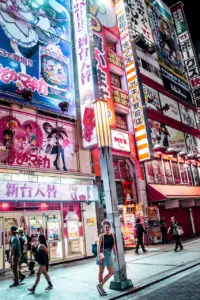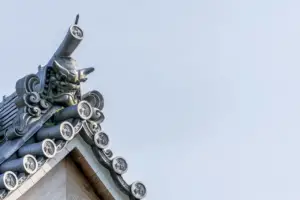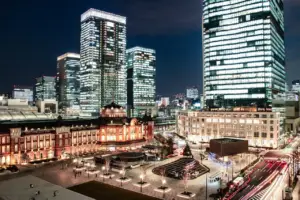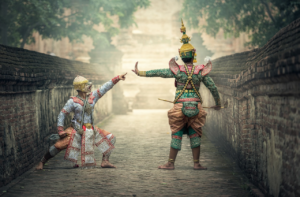Lantern Lighting Ceremonies in Japan have a rich cultural legacy that dates back centuries. These ceremonies are held in various parts of Japan and are rooted in the country’s deep reverence for light, which is believed to symbolize hope, wisdom, and enlightenment.
The ceremonies are marked by a serene and meditative atmosphere, where participants come together to light lanterns and offer prayers for peace, prosperity, and good fortune.
The symbolism of lanterns in Japanese culture is multifaceted and profound. Lanterns are considered a sacred object, used in religious and cultural ceremonies, and are believed to be a source of divine protection and guidance.
They are also regarded as a symbol of the transience of life, reminding us to cherish every moment and appreciate the beauty of impermanence. The significance of lanterns in Japanese culture has led to the development of a unique tradition of lantern lighting ceremonies, which are now an integral part of the country’s cultural heritage and a popular attraction for tourists from around the world.
Key Takeaways
- Lantern lighting ceremonies in Japan have a rich cultural legacy and are held in various parts of the country, symbolizing hope, wisdom, and enlightenment.
- These ceremonies are a way to pay respects to ancestors and pray for loved ones’ happiness, while also providing an opportunity for contemplation and inner reflection.
- Music and performances, both traditional and contemporary, are a significant part of the ceremonies, with Bon Odori and Taiko drumming being popular examples.
- The future of lantern lighting ceremonies in Japan is uncertain due to modernization and changing cultural values, with some suggesting incorporating new elements to appeal to younger generations. It depends on the willingness of Japanese people to embrace their cultural heritage and adapt it to changing times.
History of Lantern Lighting Ceremonies in Japan
The tradition of lantern lighting ceremonies in Japan dates back to the 16th century, when they were first used to guide spirits during the Obon Festival. Obon is a Japanese Buddhist festival that honors the spirits of ancestors. The festival is celebrated for three days, during which people clean their homes and visit their family graves to pay respects to their ancestors.
It is believed that during the festival, the spirits of the ancestors return to the living world to visit their families. To guide these spirits, lanterns are lit and placed outside homes and on graves.
Over time, lantern lighting ceremonies have become an integral part of Japanese culture, and they are now held for various reasons, such as to celebrate the changing of the seasons or to commemorate historical events. Today, lantern lighting ceremonies are held in many parts of Japan, and they attract thousands of visitors every year.
The ceremonies are often accompanied by traditional music and dance performances, creating a serene and mystical atmosphere that reflects the deep spirituality of Japanese culture.
Symbolism of Lanterns in Japanese Culture
Significance of illuminated paper and silk objects in Japanese traditions goes beyond their practical use and is deeply rooted in cultural and religious beliefs. Lanterns, in particular, hold a significant place in Japanese culture and are an integral part of many traditional festivals and ceremonies.
The symbolism of lanterns is multi-faceted and varies according to the type of lantern, its color, and the occasion for which it is used. Here are some of the ways in which lanterns are symbolic in Japanese culture:
-
Illumination: Lanterns are seen as a source of light that illuminates the path for the spirits of the deceased during Obon, a Japanese Buddhist custom that honors ancestors. The light is also believed to guide the spirits of the deceased back to their resting places after the festival.
-
Protection: Lanterns are seen as a source of protection from evil spirits and bad luck, and are often hung outside homes and temples to ward off negative energy.
-
Community: Lanterns are often used in festivals and parades as a way to bring people together and create a sense of community. They are used to mark the boundaries of festival areas and to light up the streets, creating a festive atmosphere.
Types of Lanterns Used in Ceremonies
Various types of paper and silk lanterns with intricate designs and vibrant colors are used in traditional Japanese festivals and events, adding to the visual spectacle and cultural richness of the celebrations.
These lanterns are not only decorative but also have symbolic meanings.
For example, the chochin lantern, which is made of paper or silk stretched over a bamboo frame, is often used in festivals and ceremonies. It is believed to ward off evil spirits and bring good luck.
The andon lantern, on the other hand, is a floor lamp that was traditionally used in Japanese homes. It has a soft glow that creates a warm and cozy atmosphere, making it a popular choice for lantern lighting ceremonies.
Another type of lantern commonly used in Japanese ceremonies is the bonbori lantern. This lantern is made of washi paper and has a cylindrical shape. It is often used to light up the paths leading to shrines and temples during festivals.
The toro lantern, which is made of stone or metal, is also commonly used in Japanese gardens and shrines. It has a more solemn and austere appearance compared to other lanterns, and is often used to create a serene and contemplative atmosphere.
Overall, the different types of lanterns used in Japanese ceremonies add to the cultural richness and visual spectacle of these events, while also carrying symbolic meanings that reflect the values and beliefs of Japanese culture.
Locations and Events for Lantern Lighting Ceremonies
One can experience the magical ambiance of illuminated gardens and temples during traditional Japanese festivals and events. Lantern lighting ceremonies are held in various locations across Japan, from the iconic Senso-ji temple in Tokyo to the serene Kiyomizu-dera temple in Kyoto. These events are usually held during the spring and fall seasons, and offer visitors a chance to witness the beauty of Japan’s natural landscapes in a unique and unforgettable way.
Here are some of the most popular locations and events for lantern lighting ceremonies in Japan:
-
Hirosaki Castle Cherry Blossom Festival – This event is held in late April to early May, and features over 2,500 lanterns illuminating the cherry blossom trees surrounding Hirosaki Castle.
-
Nara Tokae – This event is held in early August in the ancient city of Nara, and features over 20,000 lanterns lining the streets and temples of the city.
-
Kobe Luminarie – This event is held in early December in the city of Kobe, and features a stunning display of over 200,000 lights and 21-meter tall arches that create a magical, otherworldly atmosphere.
Preparation and Rituals for Lantern Lighting Ceremonies
Before the start of a lantern lighting ceremony, participants typically gather in a designated area to receive instructions and guidance on the proper way to hold and carry their lanterns. This is an important aspect of the preparation process as it ensures that the participants are able to handle the lanterns with care and respect. In addition, it helps to maintain a sense of order and unity among the participants as they begin their journey towards the illumination of the lanterns.
Once the participants have received their lanterns, they are then guided to the location where the ceremony will take place. Here, they will be able to take part in various rituals and traditions that are associated with the lantern lighting ceremony. These may include the lighting of candles, the recitation of prayers, and the offering of incense to the gods.
All of these rituals are designed to create a sense of peace, harmony, and serenity among the participants as they come together to celebrate the beauty and symbolism of the lantern lighting ceremony.
Music and Performances During Ceremonies
The Lantern Lighting Ceremonies in Japan are not only known for their stunning display of lights but also for their rich cultural performances. Traditional and contemporary music is a significant part of the ceremonies, with musicians playing classic Japanese instruments such as the shamisen and koto. Along with the music, dance and other performances are also prevalent during the ceremonies, showcasing the diversity and beauty of Japanese culture.
These performances add a unique touch to the serene and spiritual atmosphere of the Lantern Lighting Ceremonies, making them a truly unforgettable experience.
Traditional and contemporary music
Traditional and contemporary music played during lantern lighting ceremonies in Japan add to the serene and meditative atmosphere, evoking a sense of cultural richness and spiritual significance.
Traditional Japanese music is characterized by its use of unique instruments such as the koto, shamisen, and shakuhachi, which produce a distinct sound that is both soothing and haunting. These instruments are often accompanied by vocals, which are either sung or spoken in a rhythmic manner.
The music played during the ceremony is carefully chosen to reflect the theme and purpose of the event, and may vary depending on the location and time of year.
In recent years, contemporary music has also become a popular choice for lantern lighting ceremonies, offering a fresh and modern take on traditional Japanese music. Contemporary musicians may incorporate electronic instruments, such as synthesizers and drum machines, into their performances, creating a fusion of traditional and modern sounds.
This allows for a wider audience to appreciate the beauty of Japanese music, and helps to keep the tradition alive for future generations. Ultimately, whether traditional or contemporary, the music played during lantern lighting ceremonies in Japan adds to the overall ambiance of the event, and serves as a reminder of the country’s rich cultural heritage.
Dance and other performances
Performances such as dance and music are an integral part of lantern festivals in Japan, adding to the cultural vibrancy of the event. These performances are usually performed on a stage, with traditional Japanese music accompanying the dancers. The dances themselves are often traditional and symbolic, with movements meant to represent various elements of nature and Japanese culture.
One popular dance performed during lantern festivals is the Bon Odori, a traditional folk dance that is performed during the Obon festival in August. The dance is meant to welcome back the spirits of ancestors who have passed away, and is characterized by slow, deliberate movements and repetitive steps.
Another popular performance during lantern festivals is taiko drumming, a dynamic and energetic performance involving large drums and rhythmic beats.
Finally, some festivals may feature other performances such as acrobatics, puppet shows, and traditional Japanese theater. These performances add to the already vibrant atmosphere of the lantern festival and provide visitors with a deeper understanding and appreciation of Japanese culture.
Dance and other performances are an important part of lantern festivals in Japan, contributing to the cultural richness and vibrancy of the event. These performances are often traditional and symbolic, meant to represent various elements of Japanese culture and history. Visitors to these festivals can experience the beauty and depth of Japanese art and culture through these performances, making the lantern festival a truly unforgettable experience.
Experience of Attending a Lantern Lighting Ceremony
Attending a Lantern Lighting Ceremony in Japan is an experience that offers serenity and peacefulness to its attendees. The lantern lighting ceremony is a long-standing tradition in Japan, and it is a way for people to pay their respects to their ancestors and pray for the happiness of their loved ones.
The ceremony offers a unique opportunity for cultural immersion and appreciation, allowing visitors to witness and participate in a significant aspect of Japanese culture.
Serenity and peacefulness
The tranquil ambience of the lantern lighting ceremonies in Japan offers a serene escape from the chaos of modern life, providing an opportunity for contemplation and inner reflection. The soft glow of the lanterns, the gentle sound of the flowing water, and the peaceful surroundings all contribute to a sense of calm and tranquility. Attending a lantern lighting ceremony can be a meditative experience, allowing one to disconnect from the fast-paced world and connect with their inner self.
The symbolism of the lanterns also adds to the serenity of the ceremony. In Japanese culture, lanterns represent the spirits of the ancestors and are used to guide them to the afterlife. As such, the act of lighting a lantern is seen as a way of honoring and remembering loved ones who have passed away. This brings a sense of peace and comfort to those who participate in the ceremony, as they feel a connection to their ancestors and a sense of closure. The combination of the peaceful surroundings and the symbolism of the lanterns makes attending a lantern lighting ceremony in Japan a truly serene and meaningful experience.
| Emotion | Description |
|---|---|
| Peaceful | The soft glow of the lanterns and the gentle sound of the flowing water creates a peaceful atmosphere. |
| Reflective | The opportunity for contemplation and inner reflection allows attendees to connect with their inner selves. |
| Reverent | The symbolism of the lanterns as a way of honoring and remembering ancestors brings a sense of reverence to the ceremony. |
| Comforting | The connection to ancestors and sense of closure brings comfort to those who participate in the ceremony. |
Cultural immersion and appreciation
Immersing oneself in the traditions and customs of a foreign culture can be a valuable opportunity for gaining a deeper appreciation and understanding of the people and their way of life.
In the case of Japan, participating in a lantern lighting ceremony is a perfect example of cultural immersion. The ceremony is steeped in symbolism and tradition, and participants are encouraged to learn about and appreciate the meaning behind each aspect of the event.
The lantern lighting ceremony is a way to honor ancestors and pray for peace and prosperity. It is a deeply spiritual event, and participants are expected to show reverence and respect.
By participating in the ceremony, visitors can gain a deeper understanding of the importance of family, community, and spirituality in Japanese culture. The ceremony also provides an opportunity for visitors to interact with local people, learn about their lives and traditions, and gain a greater appreciation for the beauty and complexity of Japanese culture.
Future of Lantern Lighting Ceremonies in Japan
The future of lantern lighting ceremonies in Japan is uncertain, as modernization and changing cultural values may lead to a decline in their popularity and significance.
While these ceremonies have been an integral part of Japanese culture for centuries, the younger generation may not view them with the same reverence as their ancestors did. Additionally, the rise of technology and social media may lead to a shift in focus towards more modern forms of entertainment.
However, there are still those who believe in the importance of preserving these traditions. Some have even suggested incorporating new elements into the ceremonies to make them more appealing to younger generations. For example, adding interactive elements or incorporating modern technology could help to keep the lantern lighting ceremonies relevant and engaging.
Ultimately, the future of these ceremonies will depend on the willingness of the Japanese people to embrace their cultural heritage and find ways to adapt it to the changing times.
Frequently Asked Questions
How long do Lantern Lighting Ceremonies in Japan typically last?
Lantern lighting ceremonies in Japan typically last for a few hours, with the exact duration varying depending on the specific event. These ceremonies are often held at night, when the lanterns can be illuminated to create a serene and peaceful atmosphere.
During the ceremony, participants light and release lanterns into the water or sky, often with messages or wishes written on them. The act of releasing the lanterns is symbolic of letting go of negative emotions or experiences and welcoming positivity and new beginnings.
Overall, these ceremonies are a beautiful and meaningful tradition in Japanese culture, promoting reflection, gratitude, and a sense of community.
Are there any specific rules or guidelines that attendees must follow during the ceremony?
During lantern lighting ceremonies in Japan, there are certain rules and guidelines that attendees must follow in order to maintain the solemnity and respect of the event.
These guidelines include refraining from taking photos or videos, not touching the lanterns or the surrounding areas, and remaining quiet throughout the ceremony.
Additionally, attendees are expected to dress appropriately and remove their shoes before entering the designated area.
These rules and guidelines are put in place to ensure that the ceremony is conducted with the utmost respect and reverence for the deceased.
It is important for attendees to adhere to these guidelines in order to honor both the dead and the cultural traditions of Japan.
How do lanterns differ in design and purpose between different regions in Japan?
Lanterns in Japan differ in their design and purpose across different regions.
For instance, the Takayama Matsuri festival in the Hida region features large, intricately decorated lanterns with scenes from Japanese folklore, while the Aomori Nebuta festival in the northern Tohoku region showcases giant, illuminated paper lanterns shaped like warriors, mythical creatures, and other figures.
In some regions, lanterns are used to guide the spirits of ancestors during Obon, a festival honoring the dead. In other areas, they are used to celebrate the changing seasons or mark important events such as weddings and births.
The designs of these lanterns often reflect the cultural and historical traditions of the region and are a testament to the diversity of Japan’s cultural heritage.
Are there any common foods or drinks that are typically consumed during Lantern Lighting Ceremonies?
During lantern lighting ceremonies in Japan, there are no specific types of food or drinks that are typically consumed. Rather, the focus is on the symbolic and spiritual aspects of the event, and participants may choose to fast or refrain from consuming anything during the ceremony.
However, it is worth noting that some lantern lighting events may be held in conjunction with local festivals or celebrations, in which case traditional Japanese snacks and refreshments may be available for purchase or consumption.
Ultimately, the emphasis of the lantern lighting ceremony is on the illumination of the lanterns and the peaceful atmosphere that is created, rather than on any specific food or drink offerings.
Are there any traditional costumes or attire that are worn by attendees or performers during the ceremony?
Traditional costumes or attire are an integral part of Japanese culture and are often worn during various ceremonies and festivals. During lantern lighting ceremonies, attendees and performers may wear traditional attire, such as yukatas or kimonos.
Yukatas are casual summer garments made of cotton and are often adorned with floral or geometric patterns. Kimonos, on the other hand, are more formal and elaborate, made of silk and featuring intricate designs.
In addition to these costumes, performers may wear masks or costumes representing mythical creatures or historical figures. These traditional costumes not only add to the visual appeal of the ceremony but also serve as a way to honor and preserve Japanese cultural heritage.
Conclusion
In conclusion, lantern lighting ceremonies in Japan have a rich history and deep symbolism that continue to be celebrated today. These events showcase the beauty and serenity of Japanese culture, as well as the importance of community and tradition.
Through the use of various types of lanterns, locations, and rituals, these ceremonies create a unique and immersive experience for participants and spectators alike.
As the future of lantern lighting ceremonies in Japan continues to evolve, it is clear that they will remain an integral part of the country’s cultural heritage. While modern technology may change the way in which these events are organized and experienced, their fundamental values and meanings will undeniably persist.
As such, lantern lighting ceremonies will continue to serve as a reminder of the importance of tradition, community, and the preservation of cultural practices.


















































































































